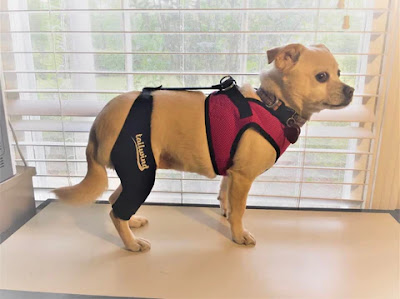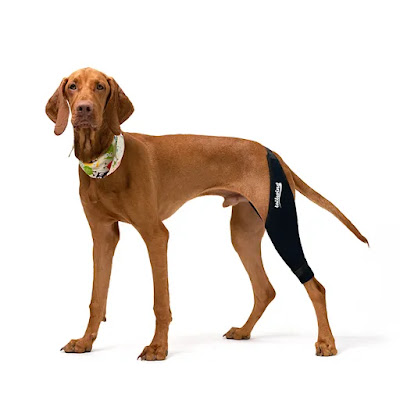Choosing the Right Dog Knee Brace Material
Selecting
the appropriate dog knee brace
material is a critical factor in ensuring effective support and management of
various canine knee conditions. The choice of material should be based on the
specific condition, the dog's size and breed, the level of support required,
and the dog's comfort. This article provides a comprehensive guide to help pet
owners and veterinarians make informed decisions when choosing the right dog knee brace material for different
knee conditions.
Neoprene
Neoprene is
a popular and versatile material used in many dog knee braces. It is known for its excellent elasticity, water
resistance, and insulating properties. Neoprene braces are commonly used for
mild to moderate knee injuries, such as strains, sprains, and minor ligament
instability.
Advantages
- Provides good compression and support to the knee joint.
- Retains body heat, which can aid in pain relief and promote blood circulation.
- Water-resistant, making it suitable for dogs that enjoy water-related activities.
Considerations
- May not offer enough stability for severe knee injuries or advanced ligament tears.
- Dogs with skin sensitivities may experience irritation with prolonged use.
Nylon and Velcro
Nylon and
Velcro combination braces are adjustable and can provide a more customized fit.
They are often used for moderate knee conditions or during the post-operative
recovery phase after knee surgery.
Advantages
- Adjustable fit allows for a snug and comfortable brace.
- Provides moderate support for various knee injuries.
- Easy to put on and take off.
Considerations
- May not offer sufficient stability for severe knee conditions or complete ligament tears.
- Velcro may lose its grip over time and may need occasional replacement.
Hinged Braces
Hinged dog knee braces feature
metal or plastic hinges on each side of the knee joint. They are typically
recommended for dogs with severe knee injuries or those recovering from knee
surgery.
Advantages
- Offers substantial support and stabilization to the knee joint.
- Hinges allow controlled movement, preventing excessive joint motion.
- Suitable for dogs with chronic knee conditions or instability.
Considerations
- May be more expensive compared to non-hinged braces.
- Proper fitting and adjustments are crucial to ensure optimal effectiveness.
Custom-made Braces
For dogs
with complex or unique knee conditions, custom dog knee braces are an excellent option. These braces are designed
specifically for each individual dog, considering their size, breed, and the
exact nature of their knee condition.
Advantages
- Ensures a perfect fit, maximizing support and comfort.
- Ideal for dogs with irregular limb shapes or those requiring long-term support.
Considerations
- Custom-made braces are typically more expensive
than off-the-shelf options.
- The process of getting a custom brace may require multiple visits to the veterinarian or a canine orthopedic specialist.
Breathable Fabrics
For dogs
that require prolonged brace usage, especially during hot weather or physical
activities, breathable materials like mesh or perforated neoprene can be
beneficial. These materials help prevent overheating and allow for better air
circulation around the knee joint.
Conclusion
Selecting the right dog knee brace material is crucial to ensuring optimal support and management of different knee conditions. Neoprene braces offer good compression and are suitable for mild to moderate injuries, while nylon and Velcro braces are adjustable and offer moderate support. Hinged braces are recommended for severe knee injuries or post-operative recovery. Custom-made braces are ideal for dogs with unique conditions, and breathable fabrics are suitable for prolonged brace usage in varying weather conditions. It is essential to consult with a veterinarian or a certified canine rehabilitation therapist to determine the most suitable material and brace type for each dog's specific knee condition to provide the best possible care and support for our furry companions.















